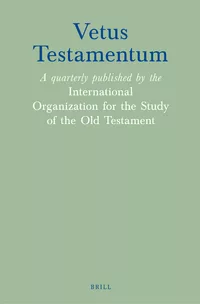https://doi.org/10.1163/15685330-bja10182
이 논문은 다음 네 가지 주장을 전개한다. (1) 창세기 10장은 원래 서로 다른 세 문헌을 편집해 구성된 것이다. (2) 이 문헌들은 세계의 구역과 집단을 상이하고 배타적인 방식으로 구분한다. (3) 이러한 구분은 최근 부각된 통찰, 즉 집단 정체성(민족·국가·인종 등)이 자연적·생물학적 속성이 아니라 인간 문화가 만든 산물이라는 점을 보여준다. 특히 ‘셈족’ 정체성은 고대 이스라엘과 유다에서 오래된 자명한 범주가 아니라, 일부 특정 문헌에만 나타나며 다른 문헌들과는 상충한다. 이후 문화권들은 창 9–11장의 편집본을 자신들의 세계관에 맞게 선택적으로 해석·활용했고, 그 결과는 오늘날까지도 해로운 영향을 미쳤다. (4) 따라서 ‘셈족(Semitic)’이라는 용어는 민족·지역·문화·종교·언어를 지칭하는 데 사용해서는 안 된다.
This paper argues that (1) the segment of text known as Gen 10 is a collation of three separate works; (2) the works have mutually exclusive ideas about the zones and groups of the world; and (3) the zones and groupings illustrate the insight that has come to the fore of late that group identity—ethnic, national, racial, and so on—is a human, cultural product, not a set of natural, biological traits. Specifically, Semitic identity was not an obvious and long-lived category in ancient Israel and Judea, but distinct to a few particular literary works and contradicted by others. Later cultures responded to the collated text at Gen 9–11 and used its terms and concepts selectively to map their own world, which has had a pernicious, bloody afterlife down to our own times. Therefore, (4) the label “Semitic” should not be used for peoples, places, cultures, religions, and even languages.






